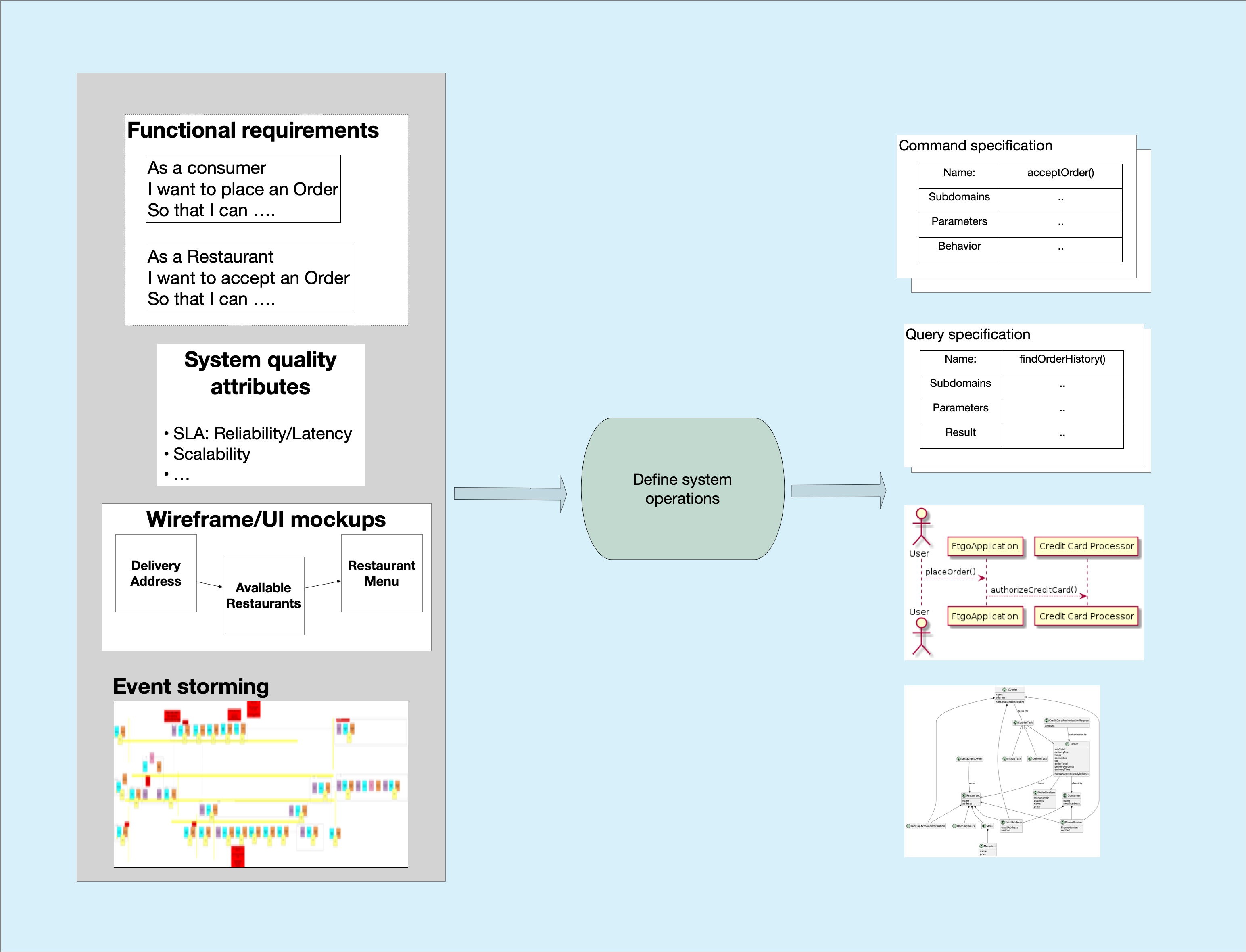Assemblage overview: Part 1 - Defining system operations
application architecture architecting dark energy and dark matter assemblageContact me for information about consulting and training at your company.
The MEAP for Microservices Patterns 2nd edition is now available
The first step of the Assemblage architecture design process distills the requirements into a set of system operations.

System operations model the application’s black box behavior
A system operation is an externally invokable behavior implemented by the application.
It reads and/or writes one or more business entities, a.k.a. DDD aggregates, such as Customer and Order.
A system operation has a parameters, and an operational return value and can be thought of as a method implemented by the application.
Collectively, the system operations model the application’s black box behavior.
System operations are invoked by external actors
A system operation is invoked by an external actor, such as users, other applications, or schedulers.
For example, an e-commerce application would typically implement user invoked system operations such as createCustomer(), createOrder(), cancelOrder() and findOrderHistory().
It might also implement system operations that are invoked by other applications, such as Stripe or Twilio.,
System operations are technology independent
A system operation is technology independent. However, the actual implementation of the operation is invoked using some combination of technologies including:
- Synchronously via a HTTP or gRPC request
- Asynchronously via a message
- By a scheduler, such as Quartz or Cron
System operations drive the architecture definition process
System operations rather than data, which is the typical enterprise approach to design, are central to the architecture definition process. They are the unit of design and evaluation. The third step of the Assemblage process designs each system operation in turn to incrementally create the service architecture. Also, four of the five dark matter forces, which are used to evaluate each decision decision, are concerned with the design of operations.
Documenting system operations
This step’s deliverables consist of the following:
- For each system operation:
- System operation specification canvas - describes a system operation’s
- signature - parameters and return value types
- behavior - the aggregates that are read and written
- non-functional requirements - e.g. responsive time, latency, throughput, …
- Sequence diagram(s) - useful for describing the behavior of complex operations that involve external applications, such as cloud and SaaS services. The diagram shows the interactions between the ‘user’, the application and external applications.
- System operation specification canvas - describes a system operation’s
- Domain model - a domain model describing the aggregates that the system operations read and write. The next step of the Assemblage process refines this model into subdomains.
What’s next?
In the next article, I describe how to define subdomains, which are the building blocks for services and contain the entities acted upon by the system operations.
Need help migrating to microservices?
I’m available to help your organization adopt microservices. I provide consulting and workshops.


 Premium content now available for paid subscribers at
Premium content now available for paid subscribers at 




